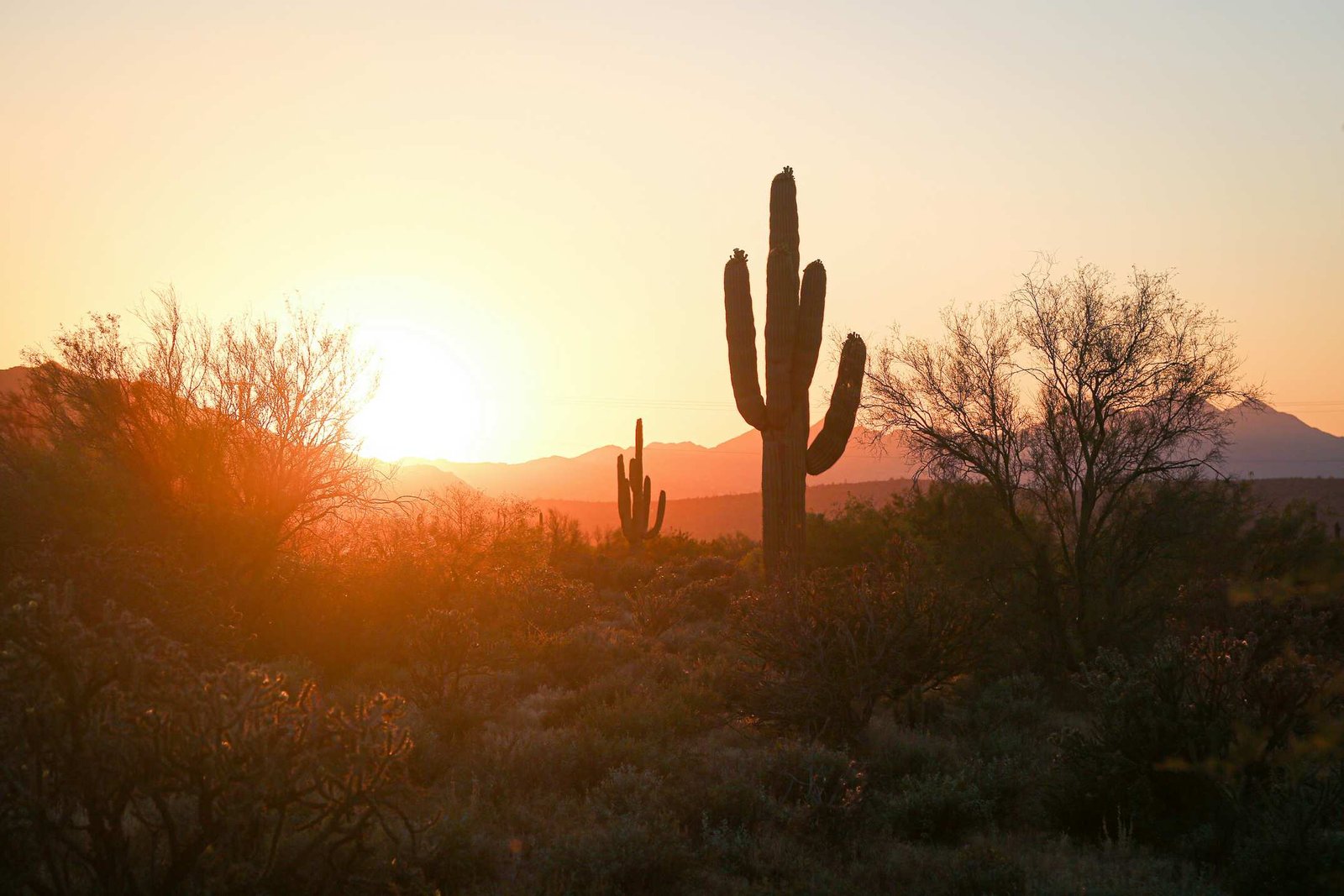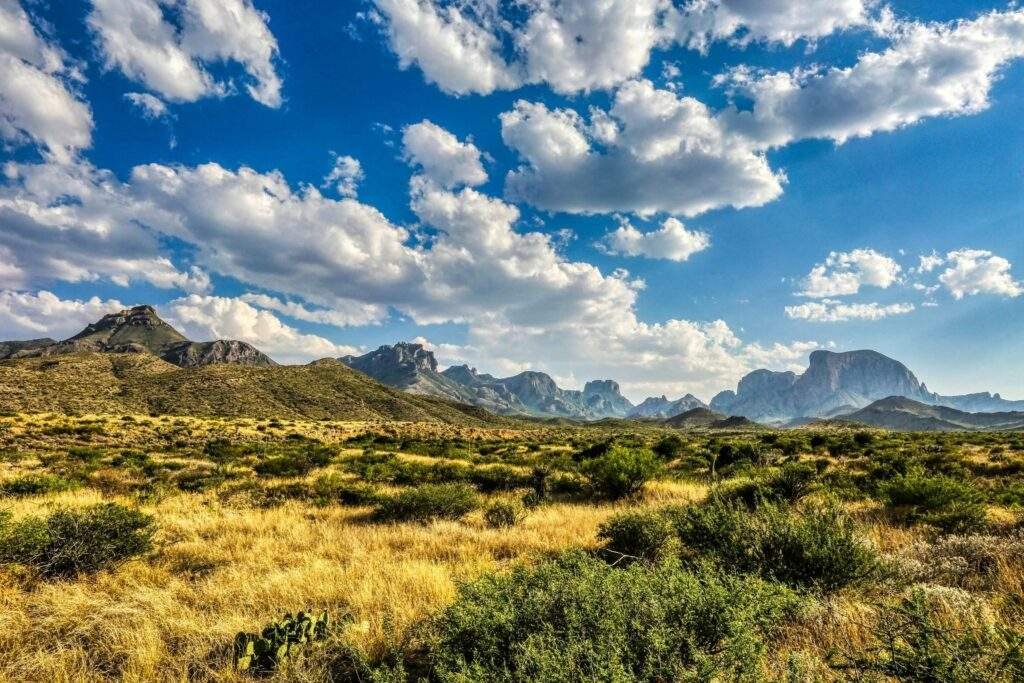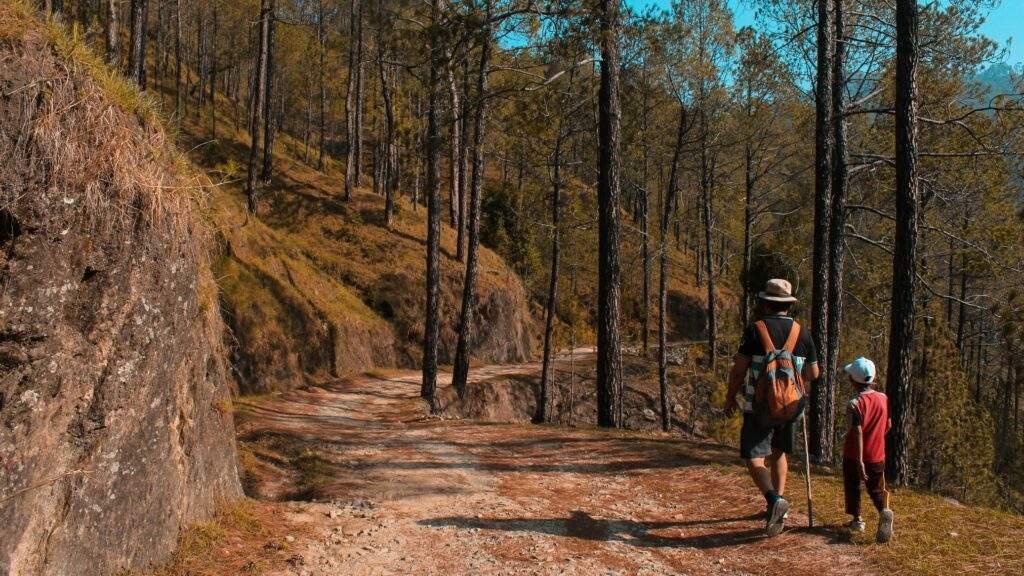Discover 10 Breathtaking Best Hiking Trails in Phoenix Now
Introduction
Phoenix, the vibrant capital of Arizona, is a hiker’s paradise nestled in the heart of the Sonoran Desert. With its diverse landscapes, from rugged mountain ranges to lush desert oases, the city offers an array of spectacular hiking trails for outdoor enthusiasts of all skill levels. In this comprehensive guide, we’ll explore the best hiking trails in Phoenix, providing you with all the information you need to plan your perfect desert adventure. Whether you’re a seasoned trekker or a casual nature lover, Phoenix’s trails offer something for everyone. Join us as we traverse the sun-drenched paths, discover hidden gems, and uncover the natural beauty that makes Phoenix a premier hiking destination.
Table of Contents

Why Phoenix is a Hiker’s Dream
Phoenix stands out as a hiker’s dream destination for several compelling reasons:
- Diverse Terrain: The best hiking trails in Phoenix showcase a variety of landscapes, from flat desert paths to challenging mountain ascents. This diversity ensures that hikers of all abilities can find suitable trails.
- Year-round Accessibility: Thanks to Phoenix’s warm climate, most trails are accessible throughout the year, making it an ideal location for winter hiking when other parts of the country are snow-covered.
- Stunning Desert Beauty: The Sonoran Desert’s unique ecosystem provides a backdrop of striking beauty, with iconic saguaro cacti, colorful wildflowers, and rugged rock formations.
- Proximity to Urban Areas: Many of the best hiking trails in Phoenix are conveniently located near or within the city limits, making them easily accessible for both residents and visitors.
- Rich Biodiversity: Phoenix’s trails offer opportunities to observe diverse wildlife and plant species unique to the desert environment.
- Spectacular Views: Many trails provide panoramic vistas of the Phoenix metropolitan area and surrounding mountain ranges.
- Cultural and Historical Significance: Some trails feature ancient petroglyphs and ruins, offering insights into the area’s rich Native American history.
Top 10 Best Hiking Trails in Phoenix
- Camelback Mountain Echo Canyon Trail
- Difficulty: Challenging
- Length: 2.5 miles round trip
- Elevation Gain: 1,264 feet
Camelback Mountain is one of the most iconic landmarks in Phoenix, and the Echo Canyon Trail is among the best hiking trails in Phoenix for those seeking a challenge. This steep, rocky trail offers a strenuous workout and rewards hikers with breathtaking 360-degree views of the Valley.
- Piestewa Peak Summit Trail
- Difficulty: Moderate to Challenging
- Length: 2.2 miles round trip
- Elevation Gain: 1,151 feet
Located in the Phoenix Mountains Preserve, Piestewa Peak is another popular summit hike. The trail is well-maintained but steep, featuring switchbacks that lead to panoramic views of Phoenix and the surrounding desert.
- South Mountain National Trail
- Difficulty: Moderate
- Length: 14.3 miles one way
- Elevation Gain: 2,330 feet
For those looking for a longer adventure, the South Mountain National Trail is one of the best hiking trails in Phoenix. It traverses the ridgeline of South Mountain Park, offering diverse terrain and stunning vistas.
- Cholla Trail at Camelback Mountain
- Difficulty: Challenging
- Length: 2.6 miles round trip
- Elevation Gain: 1,280 feet
An alternative route up Camelback Mountain, the Cholla Trail is slightly longer and less steep than Echo Canyon but still provides a challenging ascent with spectacular views.
- Papago Park: Hole-in-the-Rock Trail
- Difficulty: Easy
- Length: 0.3 miles round trip
- Elevation Gain: 200 feet
This short but scenic trail is perfect for families and casual hikers. The Hole-in-the-Rock formation offers unique photo opportunities and views of Phoenix and Tempe.
- Phoenix Sonoran Preserve: Apache Wash Loop
- Difficulty: Moderate
- Length: 7 miles loop
- Elevation Gain: 459 feet
This trail in North Phoenix offers a longer hike through pristine desert landscape, showcasing the beauty of the Sonoran Desert without the crowds of more popular trails.
- McDowell Sonoran Preserve: Gateway Loop Trail
- Difficulty: Moderate
- Length: 4.5 miles loop
- Elevation Gain: 650 feet
Located in nearby Scottsdale, this well-maintained trail offers beautiful desert scenery and is one of the best hiking trails in Phoenix for wildflower viewing in spring.
- North Mountain National Trail
- Difficulty: Moderate
- Length: 1.6 miles round trip
- Elevation Gain: 600 feet
This trail offers a quick summit hike with rewarding views of Phoenix. It’s less crowded than Camelback or Piestewa, making it a great option for a peaceful hike.
- Deem Hills Recreation Area: Circumference Trail
- Difficulty: Moderate
- Length: 5.7 miles loop
- Elevation Gain: 800 feet
This loop trail in North Phoenix offers a longer hike with varied terrain and views of the surrounding mountains and city.
- Dreamy Draw Recreation Area: Trail 100
- Difficulty: Easy to Moderate
- Length: 10.7 miles one way
- Elevation Gain: 1,075 feet
Trail 100 is a long, interconnected trail system that traverses the Phoenix Mountain Preserve. Hikers can choose to do shorter segments or tackle the entire length for a full day of hiking.
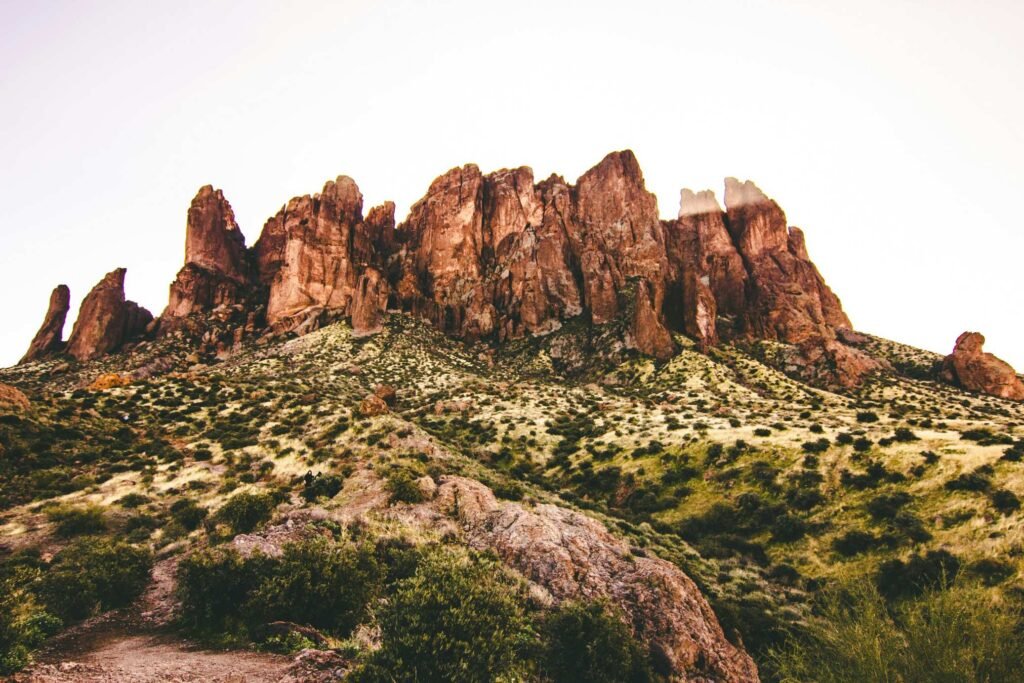
Seasonal Considerations for Phoenix Hiking
When planning to explore the best hiking trails in Phoenix, it’s crucial to consider the seasonal variations:
Summer (June – September):
- Extreme heat (often exceeding 100°F/38°C)
- Hike very early morning or evening
- Carry extra water and electrolytes
- Avoid strenuous hikes during peak heat
Fall (October – November):
- Ideal hiking weather
- Comfortable temperatures
- Less crowded trails
- Perfect for longer hikes
Winter (December – February):
- Mild daytime temperatures
- Possibility of occasional rain
- Ideal for challenging hikes
- Potential for chilly mornings and evenings
Spring (March – May):
- Pleasant temperatures
- Wildflower blooms (especially in March)
- Increased trail popularity
- Perfect for exploring a variety of trails
Essential Gear for Phoenix Hikes
To fully enjoy the best hiking trails in Phoenix, make sure you’re equipped with:
- Sturdy hiking boots or trail running shoes
- Moisture-wicking clothing
- Wide-brimmed hat for sun protection
- High-SPF sunscreen
- Sunglasses
- Hydration pack or water bottles (carry more water than you think you’ll need)
- Salty snacks or electrolyte supplements
- First aid kit
- Navigation tools (map, compass, or GPS device)
- Trekking poles (optional, but helpful on steep trails)
Safety Tips for Hiking in the Desert
- Stay Hydrated: Drink water before, during, and after your hike. On hot days, aim for at least one liter per hour of hiking.
- Protect from the Sun: Wear sunscreen, a hat, and sunglasses. Consider long-sleeved, lightweight clothing for additional protection.
- Start Early: Begin your hike early in the morning to avoid the hottest part of the day, especially in summer.
- Know Your Limits: Choose trails that match your fitness level and experience.
- Be Prepared: Carry a fully charged phone, tell someone your plans, and know emergency procedures.
- Watch for Wildlife: Be aware of potential encounters with rattlesnakes, scorpions, or other desert creatures.
- Stay on Trail: Stick to designated paths to protect the fragile desert ecosystem and avoid getting lost.
- Check the Weather: Be aware of flash flood risks during monsoon season (typically July to September).
Family-Friendly Trails in Phoenix
- Papago Park: Hole-in-the-Rock Trail
- Easy, short trail with interesting rock formations
- Desert Botanical Garden Trails
- Well-maintained paths showcasing desert plants and wildlife
- Riparian Preserve at Water Ranch
- Flat, easy trails around water features with abundant birdlife
- Dreamy Draw Recreation Area: Nature Trail
- Short, educational trail with interpretive signs
- South Mountain Park: Judith Tunell Accessible Trail
- Paved, wheelchair-accessible trail with desert views
These family-friendly options offer some of the best hiking trails in Phoenix for those with young children or those seeking easier walks.
Challenging Hikes for Experienced Trekkers
For seasoned hikers looking to push their limits, consider these challenging trails:
- Camelback Mountain: Echo Canyon Trail
- Steep, rocky ascent with some scrambling required
- Piestewa Peak Summit Trail
- Relentless incline with rocky terrain
- Flatiron via Siphon Draw Trail (in nearby Superstition Mountains)
- Steep, unmarked route with significant elevation gain
- Tom’s Thumb Trail
- Steady climb with rocky sections and rewarding views
- Boulder Canyon Trail
- Long trail with varied terrain and water crossings (seasonal)
These trails offer some of the most challenging and rewarding hiking experiences in the Phoenix area.
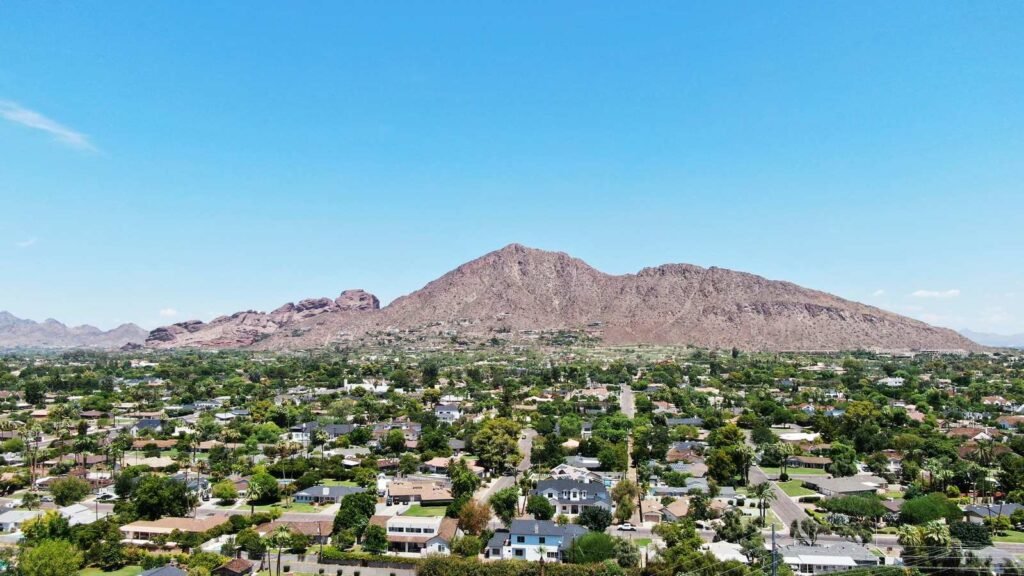
Best Sunrise and Sunset Hikes in Phoenix
Capture the magic of desert skies on these trails:
- Dobbins Lookout in South Mountain Park
- Accessible by car or hike for panoramic city views
- Papago Park: Hole-in-the-Rock
- Short hike with a unique vantage point for sunsets
- Lost Dog Wash Trailhead to Sunrise Peak
- Moderate hike offering stunning sunrise views
- North Mountain National Trail
- Quick summit hike for colorful sky views
- Cholla Trail on Camelback Mountain
- Challenging hike rewarded with breathtaking sunset vistas
Remember to bring a headlamp for safety when hiking during twilight hours.
Wildlife and Plant Life on Phoenix Trails
The best hiking trails in Phoenix offer opportunities to observe diverse desert ecosystems:
Wildlife:
- Coyotes
- Jackrabbits
- Roadrunners
- Quail
- Various lizard species
- Rattlesnakes (from a safe distance)
Plant Life:
- Saguaro cacti
- Barrel cacti
- Cholla cacti
- Palo verde trees
- Mesquite trees
- Ocotillo
- Wildflowers (spring)
Remember to observe wildlife from a distance and never feed or approach animals. Stick to trails to avoid damaging sensitive desert plants.
Combining Hiking with Other Phoenix Activities
Make the most of your Phoenix adventure by pairing hiking with other local attractions:
- Desert Botanical Garden: Combine an easy hike with a visit to this stunning garden showcasing desert flora.
- Heard Museum: After a morning hike, explore Native American art and culture at this world-renowned museum.
- Musical Instrument Museum: Rest your legs while discovering a vast collection of instruments from around the world.
- Phoenix Zoo: Pair a hike in Papago Park with a visit to the adjacent zoo.
- Goldfield Ghost Town: Combine a hike in the Superstition Mountains with a visit to this historic mining town.
- Hot Air Balloon Ride: For a unique perspective, take a sunrise balloon ride over the same landscapes you’ve been hiking.
How to Prepare for Your Phoenix Hiking Adventure
- Research Trails: Use this guide and additional resources to choose the best hiking trails in Phoenix for your skill level and interests.
- Check Weather: Monitor forecasts and plan accordingly, especially during summer months.
- Pack Essentials: Refer to the gear list provided earlier in this guide.
- Stay Informed: Check park websites or visitor centers for current trail conditions and closures.
- Acclimate: If you’re visiting from a lower elevation, give yourself time to adjust to Phoenix’s altitude and dry climate.
- Practice Leave No Trace: Familiarize yourself with principles to minimize your impact on the environment.
- Consider Guided Hikes: For those new to desert hiking, guided tours can provide valuable insights and added safety.
1. Best Times to Hike Each Trail
Understanding the optimal times to hike each trail can significantly enhance your experience on the best hiking trails in Phoenix. Here’s a breakdown for some popular trails:
Camelback Mountain (Echo Canyon and Cholla Trails):
- Summer: Very early morning (before 6 AM) or late evening
- Winter: Midday for warmer temperatures
- Avoid midday hikes in summer due to extreme heat and lack of shade
Piestewa Peak:
- Spring/Fall: Early morning or late afternoon for comfortable temperatures
- Summer: Dawn for the coolest temperatures and best views
- Winter: Midday for warmest temperatures
South Mountain Trails:
- Year-round: Early morning or late afternoon
- Summer: Very early morning to avoid heat
- Full moon nights: Popular for nighttime hikes (with proper preparation)
Papago Park:
- Year-round: Suitable for hiking anytime
- Sunset: Especially beautiful for Hole-in-the-Rock Trail
McDowell Sonoran Preserve:
- Spring: Mid-morning for wildflower viewing
- Summer: Early morning or evening
- Winter: Midday for warmest temperatures
Remember, regardless of the season, always check weather forecasts and park websites for current conditions before setting out on any of the best hiking trails in Phoenix.
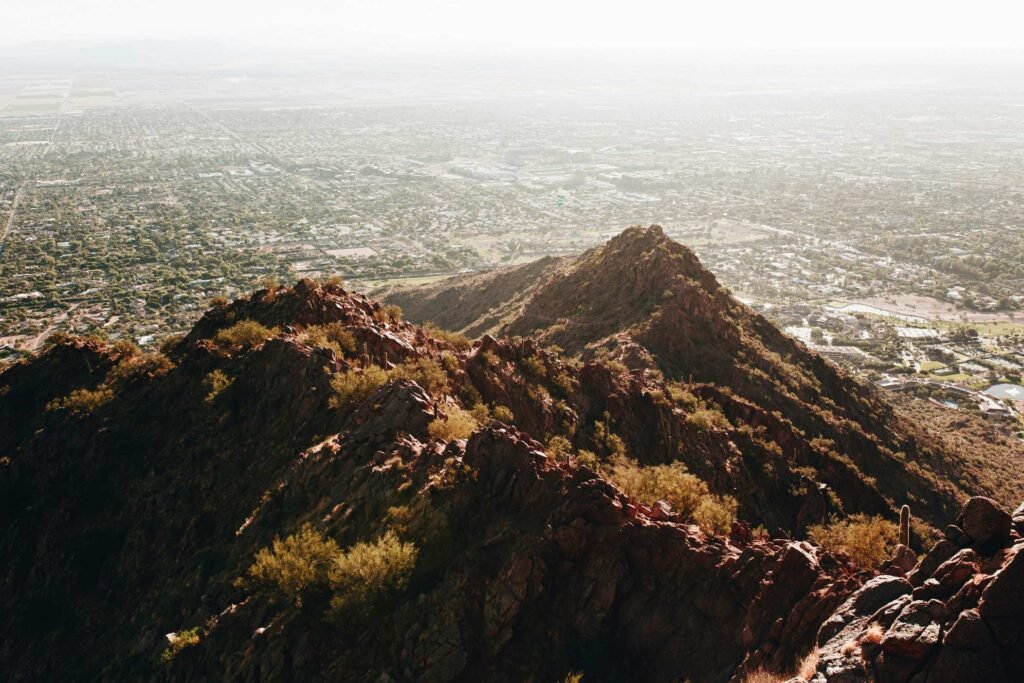
2. Local Hiking Groups and Guided Tours
Joining a hiking group or taking a guided tour can be an excellent way to explore the best hiking trails in Phoenix, especially for newcomers to the area or solo hikers. Here are some options:
Local Hiking Groups:
- Arizona Trailblazers Hiking Club: Offers hikes of varying difficulties for members.
- Phoenix Hiking Group Meetup: Organizes regular hikes for all skill levels.
- REI Co-op Phoenix Hiking Project: Hosts group hikes and outdoor skills classes.
Guided Tour Companies:
- Arizona Outback Adventures: Offers guided hikes and multi-day adventures.
- Wild Bunch Desert Guides: Specializes in private, customized hiking tours.
- 360 Adventures: Provides guided hikes and rock climbing experiences.
Park-Led Programs:
- Desert Botanical Garden: Offers guided desert ecology walks.
- South Mountain Environmental Education Center: Hosts interpretive hikes.
These groups and guides can provide valuable insights into local flora, fauna, and history while ensuring a safe and enjoyable experience on the trails.
3. Trail Etiquette and Leave No Trace Principles
Practicing proper trail etiquette and following Leave No Trace principles is crucial for preserving the best hiking trails in Phoenix for future generations. Here are key guidelines:
Trail Etiquette:
- Yield to uphill hikers and horses
- Stay on designated trails to prevent erosion and protect vegetation
- Keep noise levels down to respect wildlife and other hikers
- Don’t pick flowers or take “souvenirs” from the trail
Leave No Trace Principles:
- Plan ahead and prepare
- Travel and camp on durable surfaces
- Dispose of waste properly (pack it in, pack it out)
- Leave what you find
- Minimize campfire impacts
- Respect wildlife
- Be considerate of other visitors
Desert-Specific Considerations:
- Don’t stack rocks or create cairns, as these can confuse other hikers
- Avoid touching or leaning on cacti and other desert plants
- Never carve into or vandalize saguaro cacti – it’s illegal and harmful
By following these principles, we can all contribute to maintaining the natural beauty and integrity of Phoenix’s hiking trails.
4. Post-Hike Recovery and Local Eateries
After exploring the best hiking trails in Phoenix, proper recovery and refueling are essential. Here are some tips and local eateries to consider:
Post-Hike Recovery:
- Hydrate with water and electrolyte-rich drinks
- Stretch to prevent muscle stiffness
- Take a cool shower to lower body temperature
- Eat a balanced meal with protein and carbohydrates
Local Eateries Near Popular Trails:
- Near Camelback Mountain:
- The Henry: Upscale American cuisine
- Flower Child: Healthy, fresh options
- Near Piestewa Peak:
- Luci’s at the Orchard: Casual dining with a variety of options
- Pomegranate Cafe: Vegetarian and vegan-friendly
- Near South Mountain:
- Los Dos Molinos: Spicy New Mexican cuisine
- Morning Glory Cafe: Farm-to-table breakfast and lunch
- Near Papago Park:
- The Stockyards Restaurant: Historic steakhouse
- Green New American Vegetarian: Plant-based comfort food
Remember to bring plenty of water and snacks for during and immediately after your hike, especially when tackling the more challenging trails.
5. Accessibility Information
While many of the best hiking trails in Phoenix are rugged, there are options for hikers with limited mobility:
Wheelchair Accessible Trails:
- Judith Tunell Accessible Trail (South Mountain): Two paved, barrier-free loops
- Riparian Preserve at Water Ranch: Flat, compact gravel paths
- Desert Botanical Garden: Paved paths with minimal elevation change
Trails for Limited Mobility:
- Papago Park’s Hole-in-the-Rock: Short trail with some uneven terrain
- Phoenix Sonoran Preserve: Apache Wash Trailhead has some accessible sections
- Gateway Trailhead in McDowell Sonoran Preserve: Features an accessible interpretive trail
Always check with park officials or websites for the most up-to-date accessibility information before visiting.
6. Photography Tips for Phoenix Trails
Capturing the beauty of the best hiking trails in Phoenix requires some specific techniques:
Best Times for Photography:
- Golden Hour: Shortly after sunrise or before sunset for warm, soft light
- Blue Hour: Just before sunrise or after sunset for a cool, ethereal glow
Recommended Gear:
- Wide-angle lens for landscapes
- Macro lens for close-ups of desert flora
- Polarizing filter to enhance sky color and reduce glare
- Sturdy tripod for low-light conditions
Photography Spots:
- Dobbins Lookout on South Mountain: Panoramic city views
- Hole-in-the-Rock at Papago Park: Framed sunset shots
- Lost Dutchman State Park: Dramatic Superstition Mountains backdrop
- Desert Botanical Garden: Close-ups of desert plants
Tips:
- Use leading lines (trails, cacti) to create depth
- Include people or recognizable objects for scale
- Protect your gear from dust and heat
- Respect wildlife and maintain a safe distance
Remember to adhere to all park rules and Leave No Trace principles while photographing.
7. Historical and Cultural Significance of Hiking Areas
Many of the best hiking trails in Phoenix have rich historical and cultural significance:
South Mountain Park:
- Contains over 3,000 petroglyphs created by the Hohokam people
- Features remnants of Depression-era Civilian Conservation Corps projects
Papago Park:
- Named after the Papago (Tohono O’odham) people
- Home to “Hunt’s Tomb,” pyramid-shaped burial site of Arizona’s first governor
Camelback Mountain:
- Sacred site to the Pima and Maricopa tribes
- Named for its resemblance to a kneeling camel
Pueblo Grande Museum and Archaeological Park:
- Located near hiking trails and features Hohokam ruins
- Offers insights into ancient desert dwellers’ lives
When hiking these areas, remember to respect archaeological sites and leave artifacts undisturbed.
8. Training Tips for Challenging Phoenix Hikes
Preparing for the more strenuous best hiking trails in Phoenix requires specific training:
Cardiovascular Endurance:
- Gradually increase walking or running distances
- Use a stair climber or inclined treadmill to simulate uphill hiking
Strength Training:
- Focus on leg exercises: squats, lunges, step-ups
- Core strengthening for balance on uneven terrain
- Upper body exercises for using trekking poles
Flexibility:
- Regular stretching to prevent injuries
- Yoga for overall flexibility and balance
Altitude Acclimation:
- If coming from lower elevations, allow time to adjust to Phoenix’s altitude
- Stay hydrated and start with easier hikes
Practice Hikes:
- Begin with easier trails and progressively tackle more difficult ones
- Wear your hiking boots and carry a weighted backpack to simulate conditions
Remember to consult with a healthcare provider before starting any new exercise regimen.
9. Best Apps and Online Resources for Phoenix Hikers
Stay informed and navigate confidently with these digital tools:
Hiking Apps:
- AllTrails: Comprehensive trail maps and user reviews
- Hiking Project: REI’s free app with downloadable trail data
- PeakVisor: Identifies mountain peaks and landmarks using your camera
Weather Apps:
- Dark Sky: Hyperlocal weather forecasts
- NOAA Weather Radar: Official government weather data
Navigation:
- Gaia GPS: Detailed topographic maps and tracking
- Avenza Maps: Offline access to georeferenced PDF maps
Local Information Websites:
- HikeArizona.com: Extensive database of Arizona trails
- Phoenix.gov/parks: Official city park and preserve information
Remember to download maps and data before heading out, as cell service can be limited on remote trails.
10. Environmental Conservation Efforts and Volunteer Opportunities
Protecting the best hiking trails in Phoenix is a community effort. Here’s how you can get involved:
Conservation Organizations:
- McDowell Sonoran Conservancy: Offers volunteer opportunities in preservation and education
- Desert Botanical Garden: Volunteer programs in plant conservation and research
- Arizona Trail Association: Maintains and protects the 800-mile Arizona Trail
Volunteer Activities:
- Trail maintenance and building
- Native plant restoration
- Wildlife monitoring
- Visitor education and guided hikes
City Programs:
- Phoenix Parks and Recreation Volunteer Program
- Maricopa County Parks Volunteer Opportunities
Citizen Science:
- iNaturalist: Document plant and animal sightings
- eBird: Contribute to bird population data
By participating in these efforts, you can help ensure that the natural beauty of Phoenix’s hiking trails is preserved for future generations.
Conclusion
Phoenix’s diverse landscape and year-round hiking opportunities make it a premier destination for outdoor enthusiasts. From family-friendly nature walks to challenging mountain ascents, the best hiking trails in Phoenix offer something for every skill level and interest. As you explore these trails, you’ll discover the unique beauty of the Sonoran Desert, from iconic saguaro cacti to stunning rock formations and diverse wildlife.
Remember to always prioritize safety, respect the environment, and come prepared for the unique challenges of desert hiking. Whether you’re catching a breathtaking sunrise from a mountaintop or strolling through a blooming desert in spring, Phoenix’s trails promise unforgettable experiences and connections with nature.
So lace up your hiking boots, fill up your water bottle, and set out to explore the best hiking trails in Phoenix. Adventure awaits on every path, inviting you to discover the natural wonders of this desert metropolis. Happy hiking!

